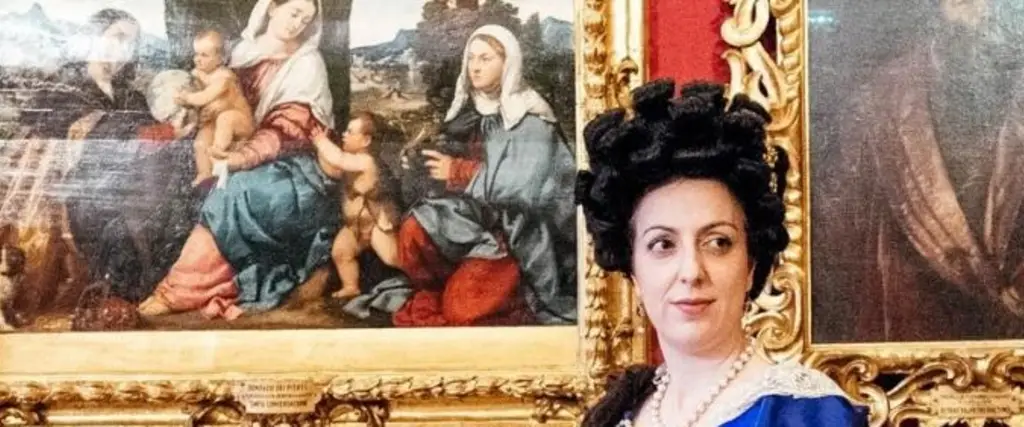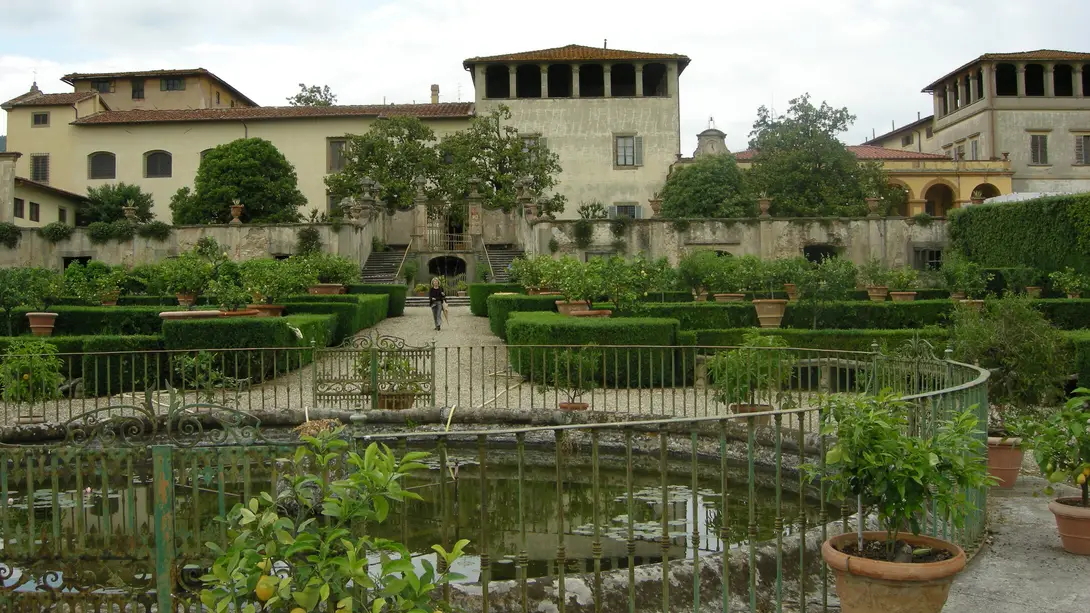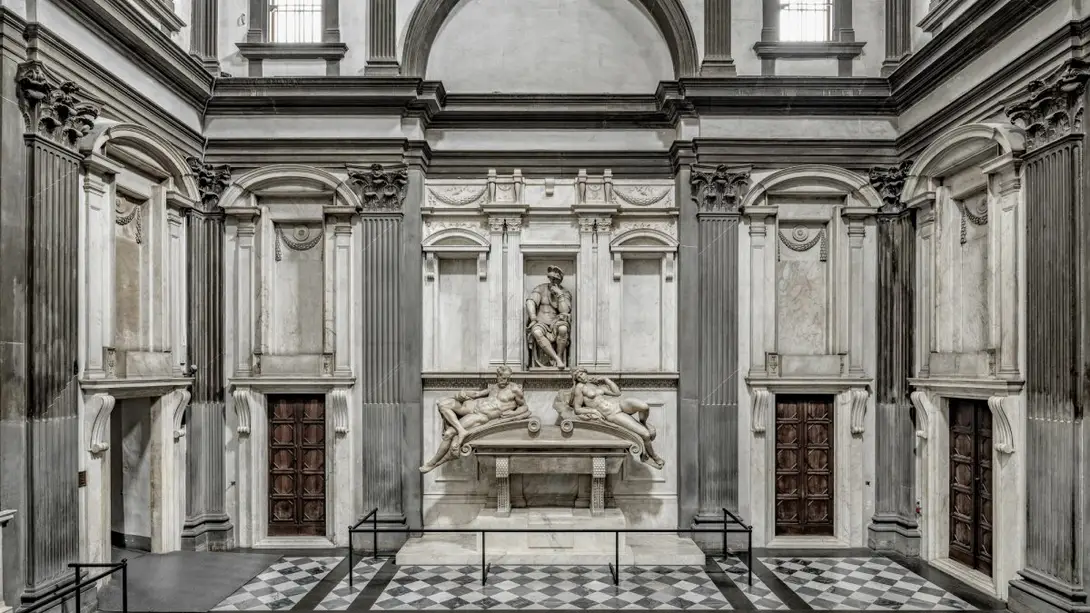
Elettrice Palatina
February 18this the death anniversary of Anna Maria Luisa de’ Medici, the last heir of her family, who bequeathed the Medici’s extraordinary art collections to the city of Florence.
The princess - known as Elettrice Palatina (Electress of the Palatinate) - following her marriage with the Prince of Saxony, Elector of the Palatinate - was the daughter of Grand Duke Cosimo III who had tried unsuccessfully to guarantee the continuity of the Medici dynasty. Back in Florence, after her husband’s death, Anna Maria Luisa had to face the difficult transition of the grand-ducal government from the Medici dynasty - which died out with the death of her brother Gian Gastone in 1737 - to the Habsburg-Lorraine dynasty.
Anna Maria Luisa, who chose Villa La Quiete as her residence, was a cultured woman, an art lover and the patron of many artists. So we should not be surprised if among the various agreements, signed with the new dynasty that succeeded the Medici, there was a very important one that would definitively mark the destiny of Florence as a city of art: the Patto di famiglia (family pact).
With this agreement, the Grand Dukes of Lorraine (starting from Francis I who entered in Florence in 1739) pledged not to transport “… or take away from the Capital or from the Grand Duchy… Galleries, Paintings, Statues, Libraries, Jewels and other precious things… of the succession of the Most Serene Grand Duke, so that they would remain by ornament of the State, for the benefit of the public and to attract the curiosity of foreign visitors.” Thanks to the Electress, the immense artistic heritage of Florence has remained in the city and we can still admire it.
Several initiatives take place every year, on February 18th to commemorate Anna Maria Luisa. First of all is the historical parade of the Florentine Republic that crosses the historic centre and arrive at the Medici Chapels, on the Tomb of the Electress of the Palatinate. Traditionally, on that day, some museums offer free entrance and visitors have the opportunity to learn more about this extraordinary woman.
Mus.e Firenze
The places
Stages
Villa La Quiete
La Quiete villa (the Quietness) named after the fresco called “La Quiete che domina i venti” painted by Giovanni from San Giovanni in 1632.
Former owners were the Orlandini family, then Villa La Quiete belonged to Niccolò da Tolentino from 1438, which he was gifted of by the Republic; in 1593, it was bought by Pier Francesco dei Medici and later it was given to Cosimo I, who gave it to the commanders of the Order of Santo Stefano.
As it was purchased by Christine de Lorraine in 1627, the season of greatest splendor started for the villa; when she died in 1636, grand duke Ferdinand II became her heir and granted it to Eleonora Ramirez de Montalvo. The noblewoman lived in the villa from 1650 and intended it as a country retreat for the congregation of nuns that she founded, called Montalve.
In 1659, Vittoria della Rovere, a friend of Eleonora’s, took the institute under her protection and promoted the building up of the church in 1688. In 1724, Anna Maria Luisa dei Medici, the last descendant of the family, moved her residence right to La Quiete.
The Villa is enriched by an 18th-century historic garden, open to the public.
Museum of Medici Chapels
The Museo delle Cappelle Medicee consists of various rooms, all of inestimable value. These include the New Sacristyby Michelangelo, and the sumptuous Chapel of the Princes, pantheon of the Medici Grand Dukes, and the Crypt.
The Museum is accessed through a new entrance, inaugurated in 2023, which leads to the Crypt, where some of the tombs of the Medici sovereigns and their families are located, and where part of the Treasure of San Lorenzo is on display.
Starting in 1604, thanks to Grand Duke Ferdinando I de' Medici the construction of the imposing Chapel of the Princes begun; it was destined to house, in the octagonal room covered with a triumph of inlays of precious and semi-precious stones, the sarcophagi of the grand dukes. This type of decoration (the so-called Commesso di pietre Dure) constitutes one of the most important craft traditions in Florence. Work continued for over two centuries.
The New Sacristy represents the last Florentine Michelangelo's masterpiece, who worked on it from 1521 to 1533, before his final departure for Rome. The great artist was responsible for the overall design of this space, a synthesis of sculpture and architecture. At the foot of the funeral monuments, of Lorenzo Duke of Urbino and Giuliano Duke of Nemours, are the famous allegorical figures of Day and Night, Dusk and Dawn. Unfinished, however, are the tombs of Lorenzo the Magnificent and his brother Giuliano, surmounted by a splendid Madonna and Child, also by Michelangelo.
Below this last room is Michelangelo's Secret Room, where the artist probably took refuge during the Republican era, leaving some drawings on the walls. This space, not included in the canonical museum tour, can only be visited by appointment.

